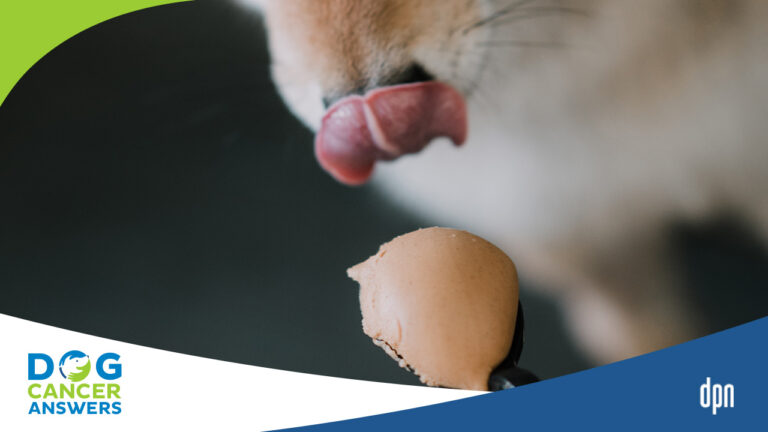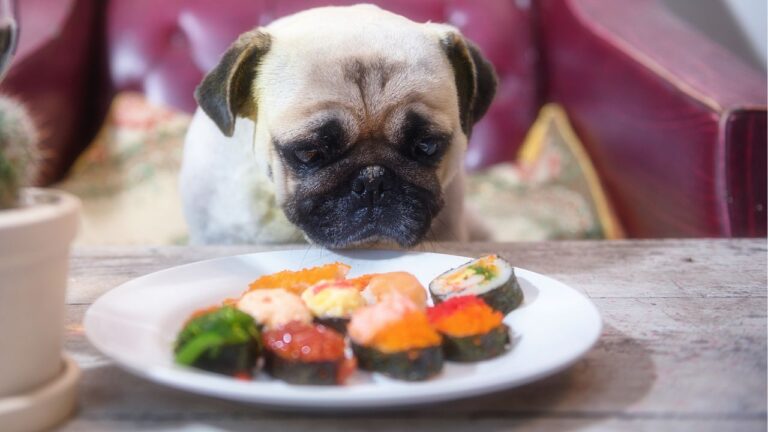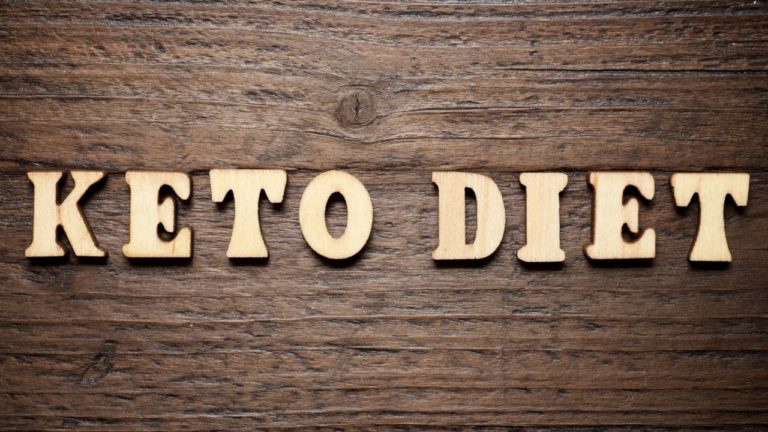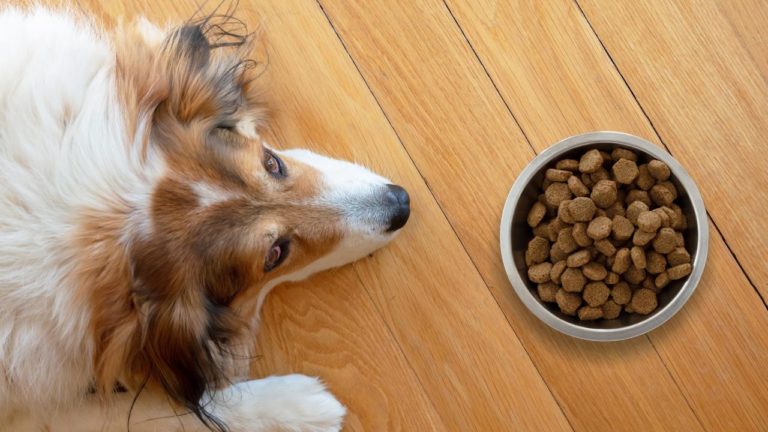Is Peanut Butter Bad for Dogs?
In most cases, peanut butter is bad for dogs — but there’s a work-around. Read this article to find out how to make peanut butter a healthy treat for your dog.
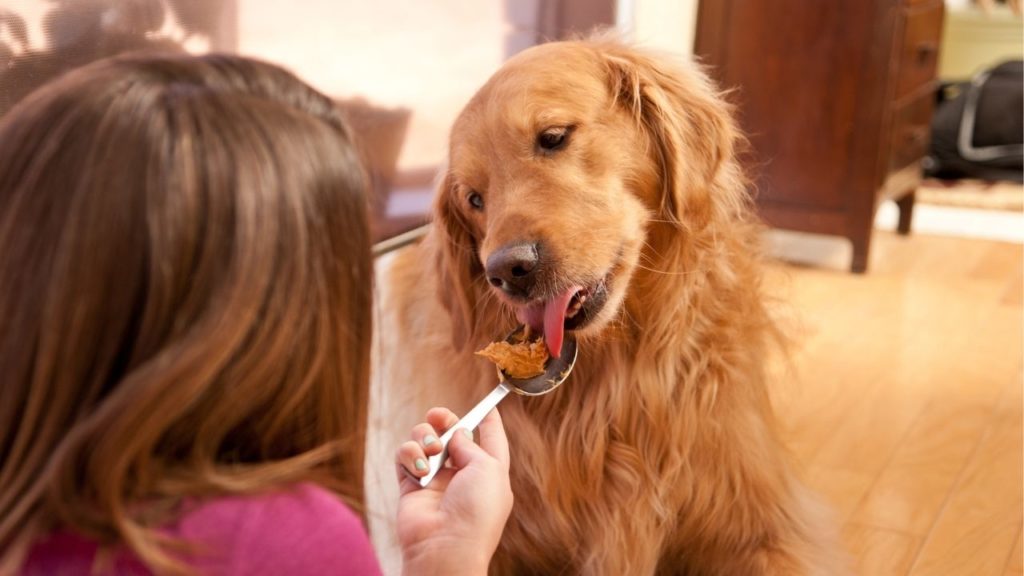
Read Time: 5 minutes
Peanut butter for dogs is delicious. It’s a creamy, sweet, and delicious treat for them. We stuff their Kongs full of peanut butter. We make treats with peanut butter. And, we let our dogs lick the peanut butter spoon after we make a sandwich. There’s no dangers in peanut butter for dogs … or is there?
Turns out, there can be — given the right conditions, even the smallest amount of most peanut butter brands can be dangerous. And there’s peanut butter in so many dog products; dog treats, dog biscuits, dog food. Ugh. Let’s go over why peanut butter for dogs may not be a great idea.
Xylitol: A Bad Sugar for Dogs
Dogs love the sugary sweetness of peanut butter. But, peanut butter is generally not recommended for dogs with cancer because of the high amounts of sugar it contains– even though the sugar is natural. In Chapter 14 of The Dog Cancer Survival Guide, Dr. Dressler covers the way sugar affects your dog’s cancer. Sugar gives cancer a fuel source. When sugar is added to the diet, the cancer cells are happy. They have more fuel in their tank to move through the body faster.
Now, some peanut butter manufacturers are adding Xylitol to their products, as a sweetener to replace sugar. Xylitol is generally safe for us, as humans, but can be fatal to our dogs even in small quantities.
Warning: manufacturers sometimes list “birch sugar” on the label instead of the name Xylitol. They can do this because technically, xylitol is a sugar extract, and it can be taken from birch trees. But even so, this is the same chemical, and all the same warnings apply.
When a dog consumes Xylitol, their blood sugar drops and liver damage begins. When our dog eats peanut butter that contains xylitol, it’s quickly absorbed into the bloodstream and results in insulin being released from the pancreas. That’s what causes blood sugar to drop. The entire process only takes between 10 and 60 minutes!
Symptoms of Xylitol poisoning include:
- Tremors
- Seizures
- Loss of motor control
The ASPCA released a peer-reviewed article about how dangerous Xylitol is to our dogs. The study included several dogs who were poisoned by Xylitol. Some dogs were poisoned simply by eating 5 or 6 peanut butter cookies!
And, xylitol is not only found in peanut butter. It’s also found in other common foods including baked goods, oral care products, gum, and vitamins.
All dogs are different, and might not have the same reaction. Some dogs are more sensitive to Xylitol than others. But, dogs with cancer should definitely not be fed peanut butter, or peanut butter treats, made with Xylitol. (Or anything else made with Xylitol!)
Aflatoxins in Peanut Butter
Unfortunately, there’s a second danger that could be lurking in peanut butter: aflatoxins. Aflatoxins are naturally occurring mycotoxins found in peanuts that have been stored improperly. Mycotoxins are poisonous compounds produced by a fungus that thrives in damp, warm conditions.
Aflatoxins can also be found in maize (corn) and rice, and also in many other foods that mold easily, like milk, cheese, nuts, soybeans, and others.
Aflatoxins can be found in commercial peanut butter, but also in the ‘healthy’ high-quality peanut butter. This is why the USDA requires that each lot of peanuts used for domestic eating (whether we’re talking about whole peanuts, roasted peanuts, or peanuts later made into peanut butter) be numbered and tested for aflatoxins. This means that lucky for us, lots flagged as containing more than what the Peanut Board Standards allow are tracked down and recalled from the market. What’s the standard they require? In order to be deemed edible quality, every lot of peanuts must test at “15 parts per billion (ppb) or less” for aflatoxins.”
That means that lots with .0000015% or less are edible. That’s a very, very low number, and likely not what dogs who are diagnosed with acute aflatoxin poisoning were exposed to.
Is 15 parts per billion that low enough to prevent long-term damage over years of eating peanut butter? It’s hard to tell, of course, but it’s what the USDA is comfortable with, and they first started regulating aflatoxins in peanuts (and other nuts) in 2002.
It’s wise to be careful about any contaminant, of course. Since the USDA is making sure that the peanuts sold are safe, it’s wise to buy and eat peanuts close to the date they were sold, within a month or two. And definitely, eating in moderation is a good idea — in other words, using peanut butter as a once-in-awhile treat, rather than a daily part of the diet — is a good idea.
Because there is no doubt, aflatoxins in can be dangerous to your dog. Aflatoxins metabolize in the liver, causing liver damage and leading to decreased liver function. The onset of acute damage can be quite quick, and the damage from mycotoxin poisoning can last anywhere from a couple of days to a few weeks. Symptoms include weakness, diarrhea, depression, vomiting and/or bleeding. So if your dog is abruptly experiencing these issues, get your veterinarian involved ASAP, and if they ask “did he eat anything moldy lately?” don’t forget to mention peanut butter as a potential source.
And, for heaven’s sake, don’t let him eat that moldy bread!
Trans-Fatty Acids in Peanut Butter
Trans-fatty acids help increase storage time, but they’re not healthy for us or our dogs. Trans-fatty acids are created as a result of hydrogenation. All hydrogenated peanut butters — the ones that come out of the jar creamy and have no oil separation — are risky to use.
In the hydrogenation process, a nickel catalyst is placed in the peanut oil. The oil is then heated, and the nickel is removed. The process completely changes the peanut butter. And peanut butter goes from being healthy to harmful to our dog’s bodies — and to ours.
This type of fatty acid is known to cause diabetes, chronic inflammation, and heart disease.
Bottom line, don’t use creamy peanut butter. Use only natural peanut butter with that thick oil on top. It’s a pain to mix it in, and it’s never as silky smooth as hydrogenated butter… but it’s much more healthy.
A Better Alternative: Safer Peanut Butter for Dogs
Most dog lovers want to give their dog peanut butter stuffed inside the hollow part of their dog’s bone. Or, stuffed into a Kong toy. Or, maybe even peanut butter to mix in their treats.
If you’re a dog lover who wants their dog to have peanut butter for the health benefits, or just for fun, you should look for raw, unsalted peanut butter made from fresh peanuts.
Or, make your own. That way you’ll know that you’ve used fresh peanuts (which have been tested and found to be safe by the USDA), and there won’t be any Xylitol, trans-fatty acids, dyes, preservatives, or weird sweeteners in your dog’s peanut butter.
Homemade Peanut Butter for Dogs Recipe
To make a small batch of homemade peanut butter, you will need
- 1 tsp of honey (optional – and definitely should be left out if your dog has cancer!)
- 1 tsp peanut oil (optional)
- 1.5 cups of unsalted, fresh roasted peanuts (or roast your own raw peanuts!)
Then follow these steps.
- Put the unsalted, roasted peanuts in a blender or food processor
- Add the peanut oil and honey
- Blend until you reach the desired consistency
The peanuts take time to release their oils, so don’t be worried if it’s not immediately what you were hoping for. There are three stages the peanut butter will go through if it’s homemade.
First, it will just look like a blob of cracked peanuts. As the oils are released you will notice a paste start to form. The paste is the second phase of the process. During the last phase, you should notice a more creamy texture to the peanut butter.
Keep it Natural
Many dog lovers enjoy giving their dogs peanut butter. It’s delicious. And, our dogs love it. But, instead of giving your dog peanut butter from the shelf, consider making your own peanut butter. By making your own peanut butter, you know exactly what’s in it. You’re not trying to extend shelf life. And, it’s a great feeling giving our dogs a treat we made ourselves.
Editorial Note: This post was originally published on a retired blog about dog cancer.
Dunayer EK, Gwaltney-Brant SM. Acute hepatic failure and coagulopathy associated with xylitol ingestion in eight dogs. AVMA. https://avmajournals.avma.org/view/journals/javma/229/7/javma.229.7.1113.xml. Published October 1, 2006. Accessed January 19, 2023.
Dunayer EK. Hypoglycemia following canine ingestion of xylitol-containing gum. Europe PMC. http://europepmc.org/article/med/15080212. Published April 14, 2004. Accessed January 19, 2023.
Gwaltney-Brant SM. Xylitol toxicosis in dogs – toxicology. Merck Veterinary Manual. https://www.merckvetmanual.com/toxicology/food-hazards/xylitol-toxicosis-in-dogs. Published January 10, 2023. Accessed January 19, 2023.
Amber L. Drake, EdD (ABD), MEd, BSc, C.L.A.S.S. Certified
Topics
Did You Find This Helpful? Share It with Your Pack!
Use the buttons to share what you learned on social media, download a PDF, print this out, or email it to your veterinarian.


